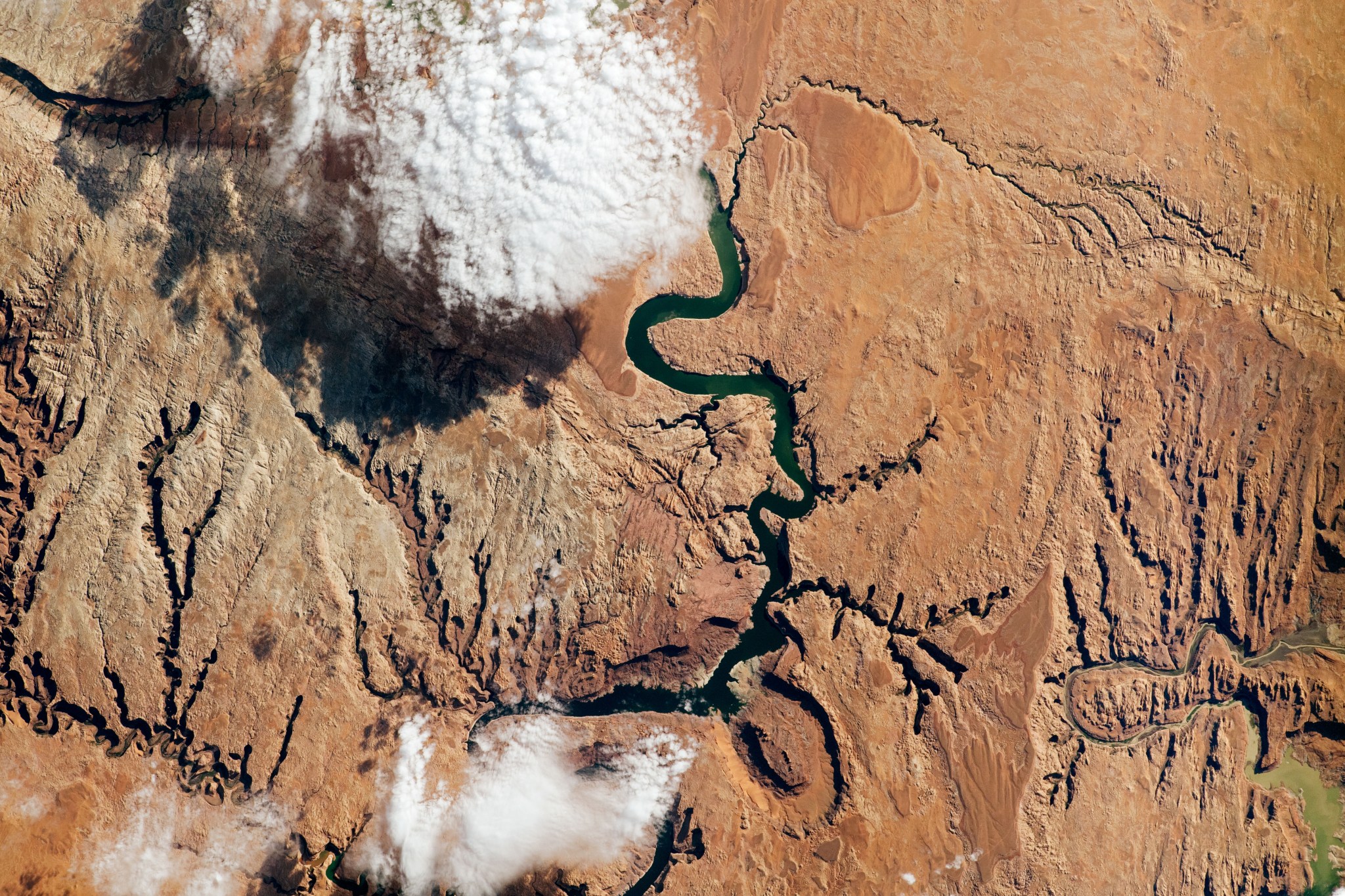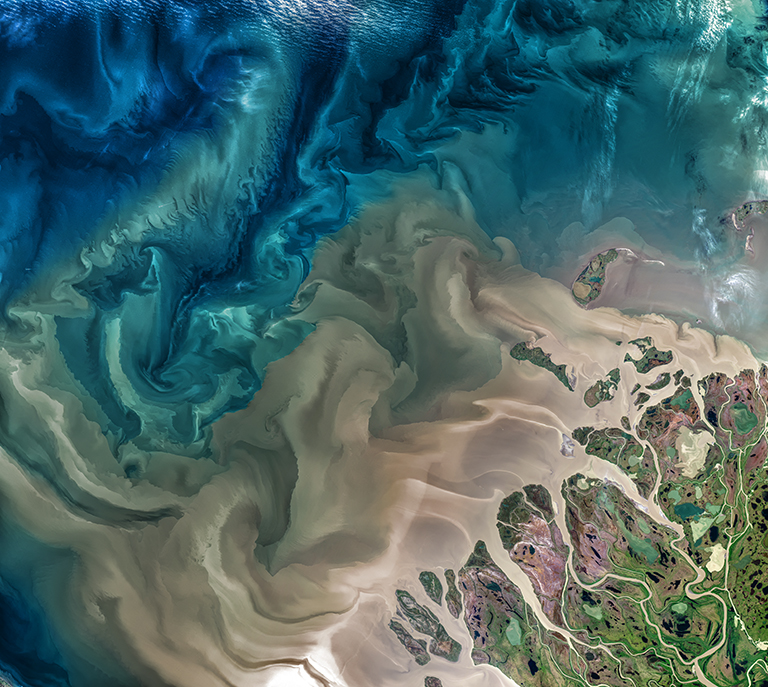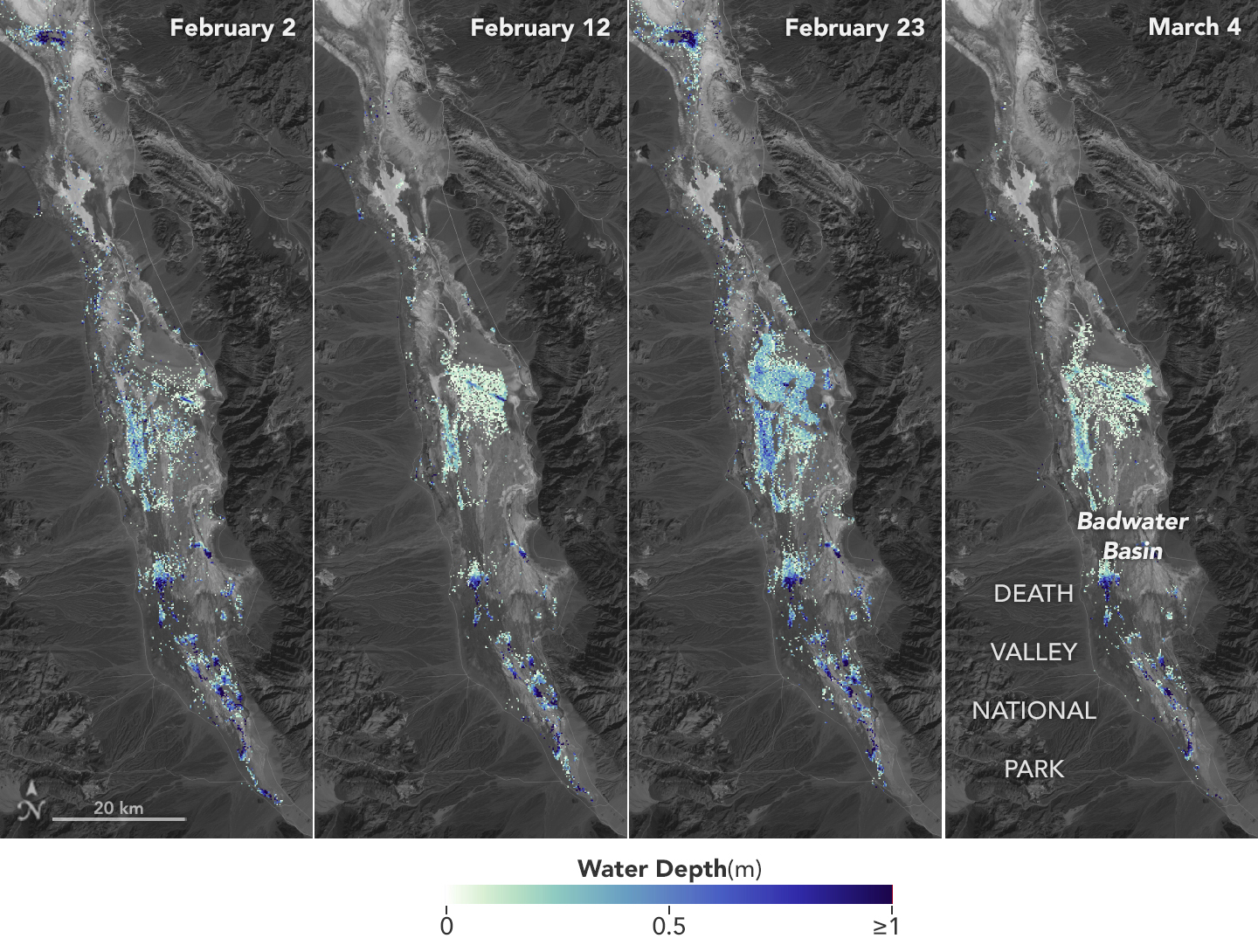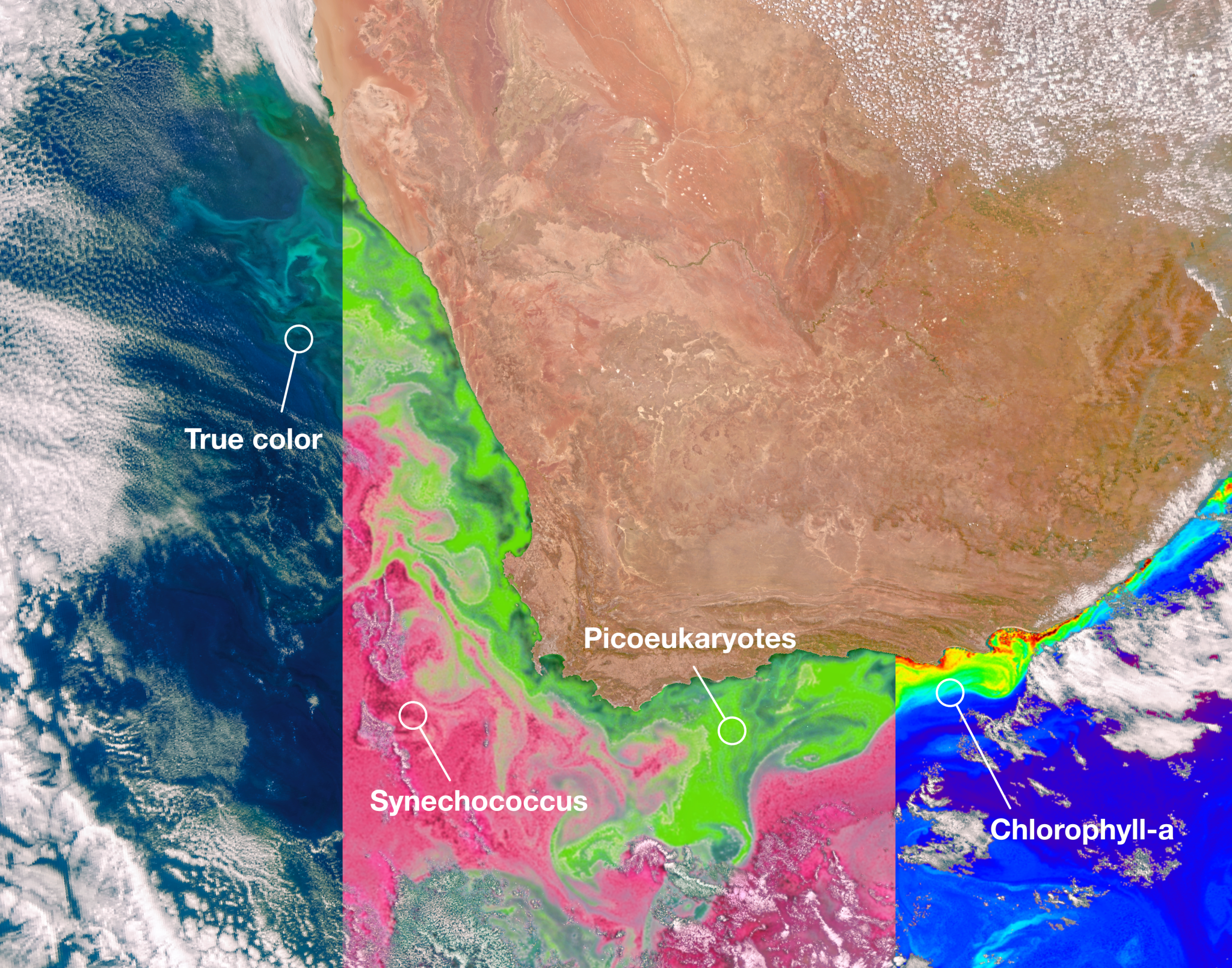5 min read Preparations for Next Moonwalk Simulations Underway (and Underwater) The Colorado River supplies water to more than 40 million people as it snakes through seven U.S. states, including the part of southeastern Utah seen in this photo snapped by an astronaut aboard the International Space Station. The Colorado basin was identified in a NASA-led study as a region experiencing intense human water use. NASA The novel approach to estimating river water storage and discharge also identifies regions marked by ‘fingerprints’ of intense water use. A study led by…
Read MoreTag: Earth
NASA’s ORCA, AirHARP Projects Paved Way for PACE to Reach Space
It took the Plankton, Aerosol, Cloud, ocean Ecosystem (PACE) mission just 13 minutes to reach low-Earth orbit from Cape Canaveral Space Force Station in February 2024. It took a network of scientists at NASA and research institutions around the world more than 20 years to carefully craft and test the novel instruments that allow PACE to study the ocean and atmosphere with unprecedented clarity. In the early 2000s, a team of scientists at NASA’s Goddard Space Flight Center in Greenbelt, Maryland, prototyped the Ocean Radiometer for Carbon Assessment (ORCA) instrument,…
Read MoreNASA Data Helps Beavers Build Back Streams
2 min read Preparations for Next Moonwalk Simulations Underway (and Underwater) A beaver family nibbles on aspen branches just up Logan Canyon from Utah State University, in Spawn Creek, Utah. Credit: Sarah Koenigsberg Humans aren’t the only mammals working to mitigate the effects of climate change in the Western United States. People there are also enlisting the aid of nature’s most prolific engineers – beavers. Using NASA-provided grants, two open-source programs from Boise State University in Idaho and Utah State University in Logan are making it possible for ranchers, land…
Read MoreNASA Selects New Aircraft-Driven Studies of Earth and Climate Change
Earth (ESD) Earth and Climate Explore Climate Change Science in Action Multimedia Data More For Researchers 5 min read NASA Selects New Aircraft-Driven Studies of Earth and Climate Change NASA has selected six new airborne missions that include domestic and international studies of fire-induced clouds, Arctic coastal change, air quality, landslide hazards, shrinking glaciers, and emissions from agricultural lands. NASA’s suite of airborne missions complement what scientists can see from orbit, measure from the ground, and simulate in computer models. Funded through the agency’s Earth Venture program, the missions…
Read MoreAI for Earth: How NASA’s Artificial Intelligence and Open Science Efforts Combat Climate Change
4 min read AI for Earth: How NASA’s Artificial Intelligence and Open Science Efforts Combat Climate Change Lights brighten the night sky in this image of Europe, including Poland, taken from the International Space Station. NASA As extreme weather events increase around the world due to climate change, the need for further research into our warming planet has increased as well. For NASA, climate research involves not only conducting studies of these events, but also empowering outside researchers to do the same. The artificial intelligence (AI) efforts spearheaded by the…
Read MoreSWOT Satellite Helps Gauge the Depth of Death Valley’s Temporary Lake
Water depths in Death Valley’s temporary lake ranged between about 3 feet (or 1 meter, shown in dark blue) to less than 1.5 feet (0.5 meters, light yellow) from February through early March. By measuring water levels from space, SWOT enabled research to calculate the depth. NASA/JPL-Caltech Data from the international Surface Water and Ocean Topography mission helped researchers to calculate the depth of water in this transient freshwater body. California’s Death Valley, the driest place in North America, has hosted an ephemeral lake since late 2023. A NASA-led analysis…
Read MoreNASA’s PACE Data on Ocean, Atmosphere, Climate Now Available
4 min read Preparations for Next Moonwalk Simulations Underway (and Underwater) NASA’s PACE satellite’s Ocean Color Instrument (OCI) detects light across a hyperspectral range, which gives scientists new information to differentiate communities of phytoplankton – a unique ability of NASA’s newest Earth-observing satellite. This first image released from OCI identifies two different communities of these microscopic marine organisms in the ocean off the coast of South Africa on Feb. 28, 2024. The central panel of this image shows Synechococcus in pink and picoeukaryotes in green. The left panel of this…
Read MoreNew NASA Strategy Envisions Sustainable Future for Space Operations
Low Earth orbit, the focus of volume one of NASA’s Space Sustainability Strategy, is the most concentrated area for orbital debris. This computer-generated image showcases objects that are currently being tracked. Credits: NASA ODPO To address a rapidly changing space operating environment and ensure its preservation for generations to come, NASA released the first part of its integrated Space Sustainability Strategy, on Tuesday advancing the agency’s role as a global leader on this crucial issue. “The release of this strategy marks true progress for NASA on space sustainability,” said NASA…
Read MoreChinese space junk falls to Earth over Southern California, creating spectacular fireball (photos, video)
A big piece of Chinese space junk crashed to Earth over Southern California early Tuesday morning (April 2), putting on quite a show for observers in the Golden State. The fall created a blazing fireball witnessed by people from the Sacramento area all the way down to San Diego, according to the American Meteor Society (AMS). As of Tuesday afternoon, 81 people had reported sightings of the event to the AMS. The hunk of space debris was the orbital module of China’s Shenzhou 15 spacecraft, according to astrophysicist and satellite…
Read MoreSatellites watch Iceland volcano spew gigantic plume of toxic gas across Europe
Scientists are tracking a massive plume of toxic gas moving across northern Europe that was spat out by the ongoing volcanic eruption in Iceland. The gas cloud is unlikely to cause any serious health problems. However, it could impact the ozone hole above the Arctic, experts warn. On March 16, an underground volcano in Icealnd’s Reykjanes Peninsula blew its top for the fourth time in as many months, opening up the largest fissure of the current eruption cycle and unleashing a massive lava flow that narrowly missed the evacuated town of Grindavík. There…
Read More







